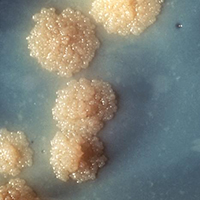Factors associated with culture conversion among adults treated for pulmonary extensively drug-resistant tuberculosis during 2018-2019 in the Russian Federation: an observational cohort study

Published: January 14, 2021
Abstract Views: 1297
PDF: 812
Publisher's note
All claims expressed in this article are solely those of the authors and do not necessarily represent those of their affiliated organizations, or those of the publisher, the editors and the reviewers. Any product that may be evaluated in this article or claim that may be made by its manufacturer is not guaranteed or endorsed by the publisher.
All claims expressed in this article are solely those of the authors and do not necessarily represent those of their affiliated organizations, or those of the publisher, the editors and the reviewers. Any product that may be evaluated in this article or claim that may be made by its manufacturer is not guaranteed or endorsed by the publisher.
Similar Articles
- Giampaolo Scorcu, Annarita Pilleri, Treatment of heart failure in the elderly: Which drugs are essential and which should be avoided , Monaldi Archives for Chest Disease: Vol. 88 No. 2 (2018)
- Jayabharathi Palanivel, Madhusmita Mohanty Mohapatra, Manju Rajaram, Debasis Gochhait, Sunitha Vellathussery Chakkalakkoombil, Rakesh Singh, Prevalence and risk factors for chronic pulmonary aspergillosis in chronic obstructive pulmonary disease patients with acute exacerbations , Monaldi Archives for Chest Disease: Early Access
- Marina Pianese, Vittoria De Astis, Raffaele Griffo, Assessing patients needs in outpatients with advanced heart failure , Monaldi Archives for Chest Disease: Vol. 76 No. 2 (2011): Cardiac series
- M. Vitacca, J. Escarrabill, G. Galavotti, A. Vianello, E. Prats, R. Scala, A. Peratoner, E. Guffanti, L. Maggi, L. Barbano, B. Balbi, Home mechanical ventilation patients: a retrospective survey to identify level of burden in real life , Monaldi Archives for Chest Disease: Vol. 67 No. 3 (2007): Pulmonary series
- Sh. Karimi, F. Mohammadi, S. Pejhan, M. Bakhshayeshkaram, P. Akhavan-Azari, M. Bahadori, Hemomediastinum and bilateral hemothorax with extensive angiomatosis of anterior mediastinum , Monaldi Archives for Chest Disease: Vol. 65 No. 3 (2006): Pulmonary series
- M. Vitacca, B. Lanini, S. Nava, L. Barbano, R. Porta, E. Clini, N. Ambrosino, Inspiratory muscle workload due to dynamic intrinsic PEEP in stable COPD patients: effects of two different settings of non-invasive pressure-support ventilation , Monaldi Archives for Chest Disease: Vol. 61 No. 2 (2004): Pulmonary series
- Cuneyt Tetikkurt, Deniz Ongel, Seza Tetikkurt, A case of bleomycin-induced lung toxicity , Monaldi Archives for Chest Disease: Vol. 88 No. 3 (2018)
- Davide Papi, Giulia Montigiani, Luca Bucciardini, How the work of respiratory physiotherapists changes the tracheostomy management and decannulation in a NICU department: an Italian experience , Monaldi Archives for Chest Disease: Vol. 93 No. 3 (2023)
- Raffaele Griffo, Antonio Spanevello, Pier Luigi Temporelli, Pompilio Faggiano, Mauro Carone, Giovanna Magni, Nicolino Ambrosino, Luigi Tavazzi, Italian survey on prevalence and disease management of chronic heart failure and chronic obstructive pulmonary disease comorbidity in ambulatory patients. SUSPIRIUM study rationale and design , Monaldi Archives for Chest Disease: Vol. 82 No. 1 (2014): Cardiac series
- Raffaele Griffo, Pier Luigi Temporelli, Francesco Fattirolli, Francesco Fattirolli, Marco Ambrosetti, Roberto Tramarin, Anna Rita Vestri, Stefania De Feo, Luigi Tavazzi, ICAROS (Italian survey on CardiAc RehabilitatiOn and Secondary prevention after cardiac revascularization): temporary report of the first prospective, longitudinal registry of the cardiac rehabilitation network GICR/IACPR , Monaldi Archives for Chest Disease: Vol. 78 No. 2 (2012): Cardiac series
<< < 21 22 23 24 25 26 27 28 29 30 > >>
You may also start an advanced similarity search for this article.

 https://doi.org/10.4081/monaldi.2021.1678
https://doi.org/10.4081/monaldi.2021.1678




